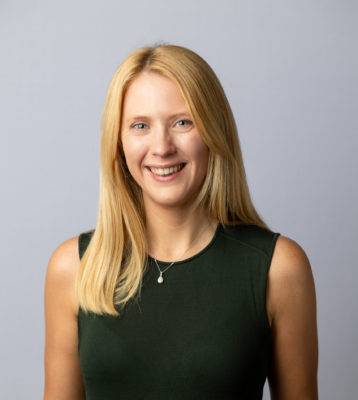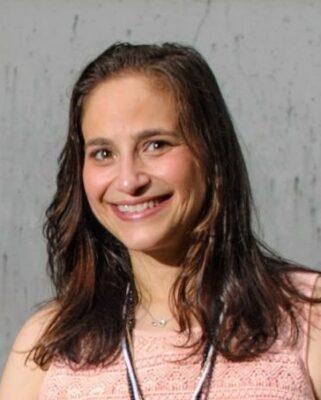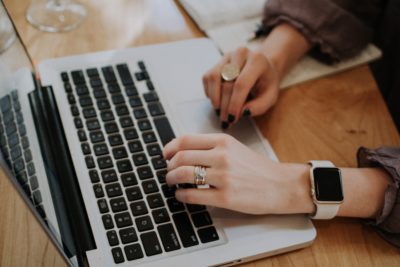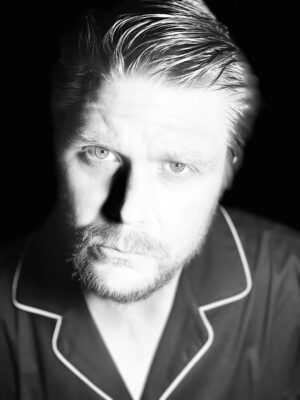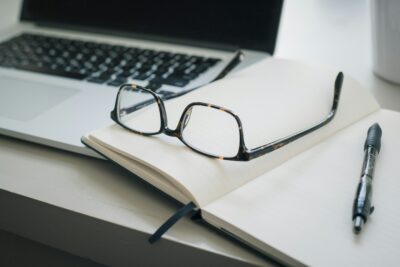This month’s Working in the Arts segment focusses on Lindsay Dewar, Head of Analytics at ArtTactic.
What time did you wake up and what are you usual working hours?
I’m an early bird and will often be at the gym for 6.30am before heading straight to work, which means my usual working hours are early too. Our team is small, and we are able to be flexible, so I am fortunate to choose hours that suit my preferred working pattern, as all my work is done. ArtTactic has been doing a version of hybrid working since long before the pandemic, with a mix of working from home and working from our office. We schedule our time in the office on an ad hoc basis, depending on who will be in and what needs to be done – I try and make sure I do a day in the office with each team member at least once a month, and I usually go into the office 3 times a week, especially on the days when the CEO will be going in as well, as we bounce ideas off each other and work collaboratively and spontaneously; when we work from home we frequently call each other.
What are your key tasks?
As the Head of Analytics, I lead the analytics and research team, with a particular focus on developing research and products. What this means in practice is creating our reports from start to finish, and thinking of new reports we can make, and how. Lots of this is regularly gathering the data on auction sales, which we do through a carefully calibrated mix of watching the auctions live, and then gathering other data manually from publicly available data. From this raw data, I (and my team, this is the most time consuming aspect of our work) clean the data, and then analyse it. From these results, we can build our reports. As time has gone on, we have made this process more and more sophisticated, and and we are able to collect far more categories of information, which in turn leads to more detailed reports, as well as creating entirely new reports. For example, we recently were able to collect information on certain museum acquisitions, which we can then analyse in conjunction with our existing database on auction sales, and create a whole new series of questions to research and answer. We also offer bespoke reports, that focus on whatever the client wants; a particular artist or movement, for example. This can be from an individual, or small dealer or gallery, all the way up to our recent collaborative project with Sotheby’s on the $1 million+ market. In practice, this is part sleuthing, and a lot of time in spreadsheets – the actual writing of the reports is a relief, and a chance to flex my more visual muscles when it comes to graphics and design.
I also run our mentoring and internship programmes, which are a central part of ArtTactic’s mission. Our Founder and CEO, Anders Petterson, is a faculty member of Sotheby’s Institute of Art, and we are a proud part of their accredited internship programme, where MA students can acquire course credits through an internship at carefully chosen companies. We also have some interns who have contacted us personally (this is on a case by case basis, rather than a specific programme). I work hard to make sure all our interns have interesting, meaningful work, that they can show off to prospective employers, and that they gain skills while they are with us. I also make sure they experience the day to day reality of the working world – we all do data cleaning, and as this is such a small company there is a real ‘all hands on deck’ mentality when deadlines are approaching and we need to get things done. In particular, I try and foster women working in data, especially within art – I didn’t know I wanted to be a data analyst, or what that meant, or how I could do it in the art world, until I became one – and it’s not something to be scared of, and you certainly don’t need to have expert maths skills. I run excel crash courses for our team, and do all I can to make data analysis less intimidating, equipping them to use tools easily at their disposal as they go on to further their careers in the art world.
What was your career path to this role?
My art world experience includes emerging Contemporary art galleries, art advisories and valuation companies, as well as various art research positions. I did my BA in History of Art and Architecture at the University of Reading, and loved how much I learnt about the wider world and culture through studying art in its historical context. As a student, I did a summer internship at a small Contemporary gallery for emerging artists, that has a heavy focus on pop up exhibitions and art fairs as their main sales channels, bringing the commercial side of the art world into my view, which chimed with my entrepreneurial bent and analytical mindset. This led me to an MA in Art Business at Sotheby’s Institute of Art; upon graduation I got an entry level job at an art advisory and appraisal start up. To start, I took on some research work, but also more general office and company administration. As I grew in my role, this administration was gradually passed over and I focused more specifically on research, as well as being responsible for the company’s quarterly publication, from start to finish. From there, in 2016, I became freelance in the art world. I maintained this portfolio career in various guises until 2023, when my role at ArtTactic became my full-time focus. Whilst freelancing, I had a few different roles, largely based around research and galleries. I was the Associate Director and Art Fair Manager for a gallery focusing on emerging artists, various research projects (regular and ad hoc), along with some work for a networking company. I began working with ArtTactic during this time, first as a research and data analyst, and as time went on I grew into this role and it grew with me – I’ve had several titles in my time with ArtTactic, and gradually increased how much of my time was spent with them.
What are the best and worst things about your job?
I love being at the cutting edge of such an exciting industry. It’s fast moving and full of characters and quirks that make it constantly evolving and engrossing, and I get to be part of that. I get to answer questions and help disseminate information and understanding on what can otherwise be a fairly inward looking set of institutions. The other thing I love about my job is that I can help other young women realise that numbers and statistics are not scary, or something beyond your understanding, even if you are creative and artistic – and, on the flip side, that if you have an analytic, numerical mind, are not a sales person or particularly ‘arty’ or ‘creative’ that the art world can still be for you to be part of, it’s not quite the exclusive club it can appear to be.
The hardest part of my job is the competing demands of different projects and properly balancing them – so managing our regular roster of reports when we have tight deadlines from bespoke clients. This is certainly a skill I have honed over the years, and I am definitely learning a lot from my CEO about how to manage these competing pressures without becoming overly stressed myself, and being able to step back and reassess. Also watching New York evening sales until 4am!
What careers advice would you give to your 18 year old self with the benefit of hindsight?
You won’t end up where you think right now you should, and that’s fine. Your future job probably doesn’t exist yet, and most jobs aren’t anything you’ve been told about at school. Don’t close doors, don’t write things off, take opportunities and see where they lead.
Keep going! You will find your niche and flourish – and be held up as a role model to other people. It doesn’t feel that way now, but if you could see me now, you’d be amazed – take a second to list out what you’ve done, what you’ve achieved!
Have you had a secret job that is not on your CV?
I was compliance officer at a mortgage company during the pandemic when the art world was struggling – not something I ever thought I’d be doing!
Thank you to Lindsay for taking the time to talk to us and look out for future insights into the art world.
Photo credit Jennifer Moyes 2023 (AWITA Conference) @jennifermoyes_
Notes from DRAW · 25.07.2023

